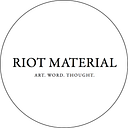The Riveting Ruaschenberg: The ¼ Mile
at LACMA
Reviewed by Nancy Kay Turner
“Every act of creation is first of all an act of destruction”
–Pablo Picasso
“There is no reason not to consider the world as one gigantic painting”
–Robert Rauschenberg
Run don’t walk to see the revelatory exhibition entitled RAUSCHENBERG: THE ¼ MILE at LACMA. The large-scale, enormously ambitious work shown here (together for the first time) as one long piece was done over seventeen years and is a joyful trip through Rauschenberg’s absolutely pristine craftsmanship, complex imagery and his many cultural touchstones. These works were started in 1981 when there was a Rauschenberg retrospective in Europe and clearly the artist is ruminating on his previous bodies of work such as his iconoclastic “Combines” from the fifties and sixties and his “Spreads” series from 1975–83.
Each “piece” of this mile-long exuberant extravaganza begins as a vertical long thin panel that abuts another and another as it tightly winds around the enormous gallery walls. Every panel is like a chapter in a sprawling epic novel as all the sections relate chromatically to those that follow and foreshadow those to come in terms of content and narrative. The stunning installation is clean, careful and just resonates in this vast gallery space.
Though Rauschenberg’s vocabulary of humble found objects such as scuffed cardboard boxes from New York’s Chinatown, to stained shirts, to common dishtowels, is well known, his neat overlapping of fabrics, paint and the transfer imagery from his own photography, rather than printed matter, is the star here. These works not only comment on Rauschenberg’s own history as a painter, sculptor and mixed media artist, but also comment with a sly sense of humor on color field painting, shaped canvases, Op and of course, Pop art.
The first grouping of panels — which has figures of friends, colleagues, family and lovers- outlined simply like elementary kids do in school, is surrounded by images that specifically relate to Rauschenberg’s relationship to his subject and their relationship to the world. These silhouettes harken back to work that Rauschenberg and Susan Weil (his soon-to be -wife) did together in 1949, when they got a friend to lay face down on blueprint paper and exposed her to a sun lamp, creating a blue x-ray–like image. These human-sized silhouettes are the most obvious feature for a number of panels as is the bright, nearly neon orange hue that comes from the Thai saffron dyed fabric. As always, there is an implicit grid-like structure, which holds the composition together, and prevents it from spinning out of control. These panels, numbered 44–60, 67, 68 and 74, were all were finished in 1983. They are all comprised of fabric, acrylic, ink, graphite, solvent transfer and objects on plywood panel, tightly arranged so that one must look very closely to differentiate the painted, printed and glued areas.
The figures begin to have the photo transfers contained inside their bodies as if they had ingested something strange and were being x-rayed. Eventually the figures disappear totally when Rauschenberg turns the panels on their side in order to stack them horizontally, which totally changes their shape. This section of the series then becomes resolutely abstract with the imagery referencing both quilts and pattern painting. Ironically, these panels are devoid of any figuration, while Rauschenberg has skillfully blended actual thin fabrics, which are largely indistinguishable from the hand painted surface. . .
To read the rest of Turner’s review, go to Riot Material magazine: https://www.riotmaterial.com/ruaschenberg-quarter-mile/
And please follow us on Facebook: https://www.facebook.com/riotmaterial/
